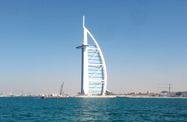Work to build on the emirate’s reputation as a tourist destination by easing visa regulations and encouraging cruise tourism is under way but there are concerns that the European debt crisis and uncertainty regarding the global economic climate have the potential to weaken demand.
Dubai has been leading the push to streamline visa procedures for tourists visiting the UAE, promoting a plan to introduce a multiple-entry visa system in September 2012. The greatest single beneficiary of this plan, should it be adopted, will be the cruise tourism segment, one component of the industry singled out by authorities for fast-tracked development.
“The global cruise ship industry has had its difficulties of late, but here it is a growing business and one where we feel Dubai can play a larger role within the region,” Khalid Bin Sulayem, the director-general of the Dubai Department of Tourism and Commerce Marketing (DTCM), told OBG. “While we have already established ourselves as a hub, we realise that there are a number of things that we must focus on in order to fully capitalise on this burgeoning sector by developing our cruise ship terminal infrastructure and improving coordination with neighbouring countries.”
The current visa regime imposes extra fees and requires extensive paperwork from the visitors of 32 nations who are not permitted to get visas on arrival in the UAE, and have to get them in advance. With many cruises starting and finishing in Dubai, the present one-entry visa system means many visitors must obtain a second entry stamp before disembarking.
Having to stand in line to have additional visas stamped into their passports limits the amount of time visitors can spend ashore − a significant problem considering that most cruises only berth for one day or so at Dubai and the other emirates. By speeding up the visa process, cruise passengers will be able to visit more tourist sites and retail centres on land, thus pumping more money into the local economy.
According to Hamad bin Mejren, the executive director of the business tourism unit at the DCTM, the department is working with the federal government to implement the plan as soon as possible.
“The move would be a big boost to Dubai’s growing tourism industry. We have re-emphasised the importance of a multiple-entry UAE visa for cruise tourists to the highest levels of government,” Mejren said in a statement issued at the end of May.
If the new regime is put in place by the time the new season opens, it may well play a part in enabling the emirate to exceed the 420,000 cruise tourists expected to arrive this year, compared to the 396,500 arrivals on 108 liners in 2011. DTCM projections forecast a steady rise in cruise tourist numbers through to 2015, when the agency predicts the emirate will see 145 port calls, 500,000 passengers and an economic impact of Dh3.5bn ($952.8m). A number of Dubai-based lines are also looking to attract Gulf nationals – particularly those from Saudi Arabia and Kuwait.
The region’s cruise tourism does currently face difficulties in addition to visas. Growing concerns over the health of the European economy, with the eurozone’s debt crisis likely to spill over into international markets, combined with unrest in parts of the Middle East, have had an impact, something Helen Beck, the regional director for Royal Caribbean International – which home ports in Dubai during the Gulf season – confirms.
According to Beck, “We did not get the revenues we were looking for, as the global trading conditions have been quite tricky over the past 18 months.”
Those concerns have not stopped two new lines – the Germany-based FTI Cruises and TUI Cruises – from launching operations out of Dubai this year, taking the number of operators based at the emirate’s international cruise terminal to five.
Though cruise tourism represents only a fraction of Dubai’s broader international holiday and travel trade, the segment is a lucrative one. Cruise tourists are generally seen as good spenders when ashore, while having five lines based out of Dubai this season will mean most supplies will be bought locally, in turn contributing to the domestic economy.

